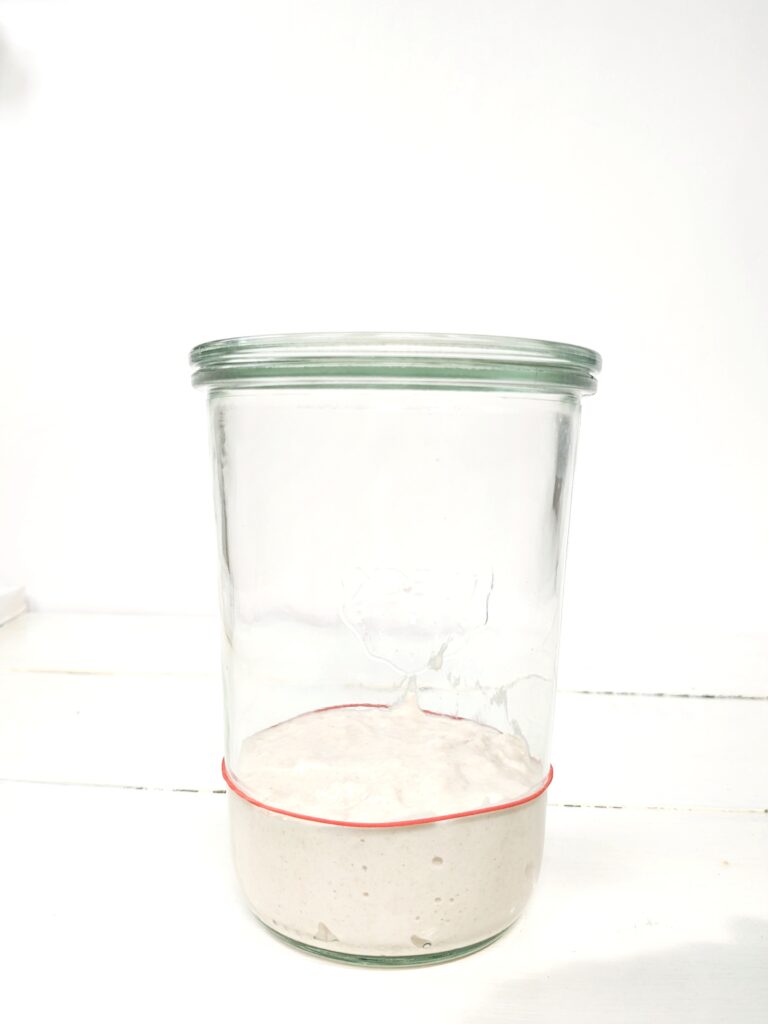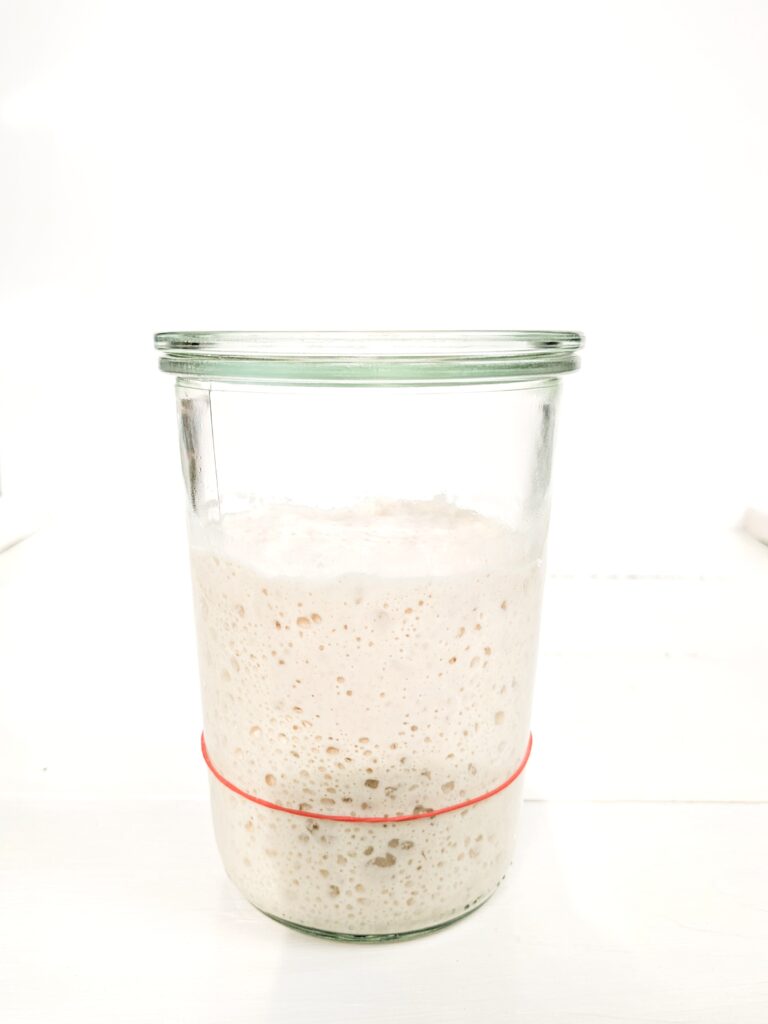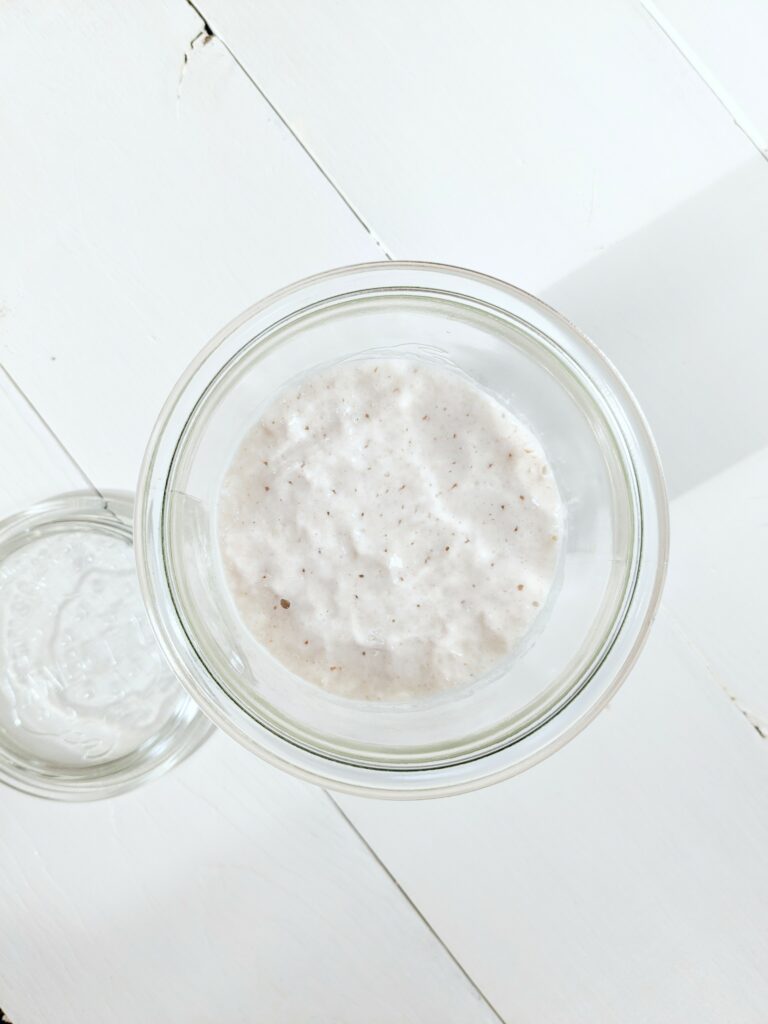
Sourdough starters are fairly easy to keep alive, and quite hard to kill. They can almost always be revived from the brink, as long as there is no mold (which will never grow on a strong, healthy starter).
Your sourdough culture is a hungry little thing that will need to be fed regularly to keep it strong and healthy.
The good news is, it can be temperature controlled (AKA stuck in the refrigerator) to help slow it between feedings.
Add equal weights of flour and water in at least the same quantity of starter you are “feeding”.
(Example: if you have 50g of starter, you want to feed it 50g of flour and 50g water. This is 1:1:1 ratio).
However, I recommend higher ratio feedings.
This builds a strong starter, gives you more time between feedings, and gives you a longer *peak window.
I usually feed mine 1:5:5, meaning if I have 15g of starter, I will feed it 75g of flour and 75g water. It will usually take around 12 hours for this to be ready to use.
DISCARD: If you have too much starter before feeding (say, you have 100g but you only need 50g) the extra will need to be discarded, or removed before feeding.
There are lots of discard recipes out there to use this excess up. Many people have a “discard” jar that they keep in the fridge for this.
*PEAK: This is when your starter is most active and should be used. At peak, your starter will have at least doubled since feeding (and not yet fallen), have bubbles on the surface and sides, and smell sweet- not floury or acidic.
In order to remain active and ready, your sourdough starter will need to be fed at least once a day. Don’t need to bake every single day? Stick in the fridge!
Refrigeration will slow down the yeast activity.
You can feed refrigerated starter as little as weekly, but it will need at least 2 peaked feedings to bounce back before using.
VERY little starter needs to be kept or maintained to keep it going. I often just save my “dirty” sourdough starter jar because what is left sticking to the jar is sufficient.
When I go to bake something, I will feed it the weight of exact amount of starter I need for the recipe, then save the “dirty” jar again. I almost never have leftover discard.
Let’s walk through an example of a feeding.
This is what I am starting with. Its not very much starter, because I don’t keep a lot of starter active at a time to reduce waste from needing to discard.
I need 100g of starter for recipe, so I am going to feed this 100g of flour, and 100g of water, and stir it well.
I know this is less than 100g of starter in here, so I am not even going to weigh what I am starting with.
I always mark the top of starter line immediately after feeding so I can easily monitor its growth.
Rubber bands are my favorite for this.
I will leave it on the counter until it doubles.

This is what it looks like when it is ready to use:

Key marks that I look for:

